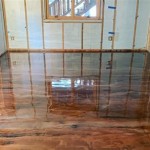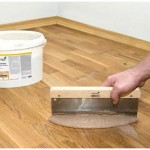Wood Floor Return Air Grilles: Aesthetics, Functionality, and Installation
Wood floor return air grilles represent a confluence of aesthetic design and essential functionality within a building's HVAC (Heating, Ventilation, and Air Conditioning) system. These grilles, often integrated seamlessly into wood flooring, are responsible for drawing air back into the HVAC system for recirculation, filtration, heating, or cooling. Their selection, installation, and maintenance are crucial factors that impact both the efficiency of the HVAC system and the overall appearance of the room.
Unlike metal or plastic grilles, wood floor return air grilles offer the advantage of matching the existing flooring. This provides a less obtrusive and more visually appealing solution for air return ductwork. The type of wood, finish, and design can be carefully selected to complement the surrounding floor, ensuring a cohesive and harmonious interior design. The careful consideration of these grilles becomes integral to achieving a desired aesthetic outcome in both residential and commercial spaces.
The importance of proper sizing and installation of these grilles cannot be overstated. An undersized grille can restrict airflow, leading to reduced HVAC efficiency and potentially causing the system to work harder, resulting in increased energy consumption and premature wear. Conversely, an improperly installed grille can create gaps or air leaks, impacting the air balance within the room and potentially introducing drafts or uneven temperature distribution.
Understanding the Functionality of Return Air Grilles
Return air grilles serve a vital role in the operation of an HVAC system. They are the entry points for air that has already circulated through a building's interior spaces. This air, which may have been heated or cooled, is drawn back into the system, passing through filtration mechanisms to remove dust, allergens, and other particulate matter. The filtered air is then either reheated or recooled before being redistributed throughout the building. This continuous cycle of air circulation helps maintain consistent temperature and air quality.
The placement of return air grilles is strategic and often determined by the HVAC system's design and the building's layout. Ideally, they are positioned in areas where air tends to stagnate or where temperature imbalances are more likely to occur. Common locations include hallways, near interior walls, and in proximity to large windows or exterior doors. The goal is to ensure that the air is effectively drawn back into the system from all areas of the building, preventing pockets of stagnant or unevenly tempered air.
The design of the grille itself plays a significant role in optimizing airflow. The spacing and angle of the grille's slats or perforations are carefully engineered to minimize resistance and maximize the volume of air that can pass through. A well-designed grille will allow for smooth and unrestricted airflow, contributing to the overall efficiency of the HVAC system. Regular cleaning and maintenance are essential to prevent dust and debris from accumulating within the grille, which can restrict airflow and reduce its effectiveness.
Beyond their primary function of air return, these grilles can also contribute to sound attenuation. The wood material itself can absorb some sound waves, helping to reduce noise levels within the room. This can be particularly beneficial in spaces where noise control is a concern, such as offices, libraries, or residential living areas. The density and type of wood used in the grille's construction can influence its sound-absorbing properties. In addition, the design of the grille, including the spacing and angle of the slats, can also affect its ability to attenuate sound.
Selecting the Right Wood and Finish
The selection of wood species for a floor return air grille is paramount in achieving a visually appealing and durable result. Different wood species offer varying degrees of hardness, grain patterns, and color variations. Hardwoods such as oak, maple, and cherry are popular choices due to their durability and resistance to wear and tear. Softwoods, such as pine and fir, may be less expensive but are more susceptible to scratching and denting. When selecting a wood species, consider the existing flooring and the desired aesthetic outcome.
The grain pattern of the wood can also significantly impact the grille's appearance. Woods with straight grain patterns tend to have a more uniform and consistent look, while those with more intricate or figured grain patterns can add visual interest and character. The choice of grain pattern depends on the desired aesthetic style and the overall design of the room. Matching the grain pattern of the grille to the surrounding flooring can create a seamless and integrated look.
The finish applied to the wood floor return air grille is crucial for protecting the wood from moisture, scratches, and UV damage. Various types of finishes are available, including polyurethane, varnish, and oil-based finishes. Polyurethane is a popular choice due to its durability and resistance to wear and tear. Varnish offers a similar level of protection but may have a slightly different sheen. Oil-based finishes penetrate the wood, enhancing its natural beauty and providing a softer, more matte appearance. The choice of finish depends on the desired aesthetic outcome and the level of protection required.
The color of the finish should also be carefully considered to ensure that it complements the existing flooring. Matching the color of the grille to the surrounding floor can create a cohesive and integrated look. Alternatively, a contrasting finish can be used to create a focal point or add visual interest. When selecting a finish color, consider the lighting conditions in the room and the overall color scheme. It is also a good approach to test a sample of the finish on a small piece of wood to ensure that it matches the desired color and sheen.
Beyond aesthetics, the finish must be appropriate for the environment. In areas with high humidity or moisture exposure, a water-resistant finish is essential. It is important to ensure that the chosen finish is compatible with the type of wood used in the grille's construction. Some finishes may not adhere properly to certain types of wood, which can result in peeling, cracking, or other types of damage.
Installation and Maintenance Considerations
Proper installation is critical for ensuring the functionality and longevity of wood floor return air grilles. The grille must be securely fastened to the floor to prevent movement or rattling. The edges of the grille should be flush with the surrounding flooring to prevent tripping hazards and ensure a seamless appearance. It is crucial to follow the manufacturer's instructions carefully during installation to avoid damaging the grille or the surrounding flooring.
Before installation, the subfloor should be level and free of debris. Any gaps or imperfections in the subfloor should be filled to ensure a smooth and even surface. The size of the opening for the grille should be precisely measured to ensure a proper fit. An undersized opening can restrict airflow, while an oversized opening can create gaps or air leaks.
Regular maintenance is essential for keeping wood floor return air grilles in good condition. The grille should be cleaned regularly to remove dust, dirt, and debris. A vacuum cleaner with a brush attachment can be used to remove loose particles. For more stubborn dirt or stains, a damp cloth and mild soap can be used. It is important to avoid using harsh chemicals or abrasive cleaners, which can damage the finish.
Periodically, the finish of the grille may need to be touched up to restore its appearance and protect the wood. Scratches, dents, or other minor imperfections can be repaired using wood filler or touch-up paint. The entire grille may need to be refinished if the finish is severely damaged or worn. Before refinishing, the grille should be thoroughly cleaned and sanded to remove any old finish. A new coat of finish should then be applied, following the manufacturer's instructions.
It is also important to inspect the grille regularly for any signs of damage or wear. Cracks, splits, or loose slats should be repaired promptly to prevent further damage. If the grille is severely damaged, it may need to be replaced. When replacing a grille, it is important to select a replacement that is the same size and style as the original.
Following these installation and maintenance guidelines will ensure that wood floor return air grilles provide years of efficient service and aesthetic appeal. The durability and beauty of these elements are maximized through careful selection, proper installation, and diligent maintenance, ensuring integration into the overall design and functionality of a building's HVAC system.

Wood Floor Return Grilles Surface Mount With Steel Bracing

Wood Floor Vents Flush Mount American

Wood Floor Return Grilles Surface Mount With Steel Bracing

Wood Floor Vents

Ac Floor Clearance Bargain Return Grille

Wood Floor Return Grilles Surface Mount With Steel Bracing

Surface Mount Return

Wood Registers Flush Mount Grilles Pacific Register

Welcome To Cape Cod Air Grilles

Floor Air Returns Fittes







